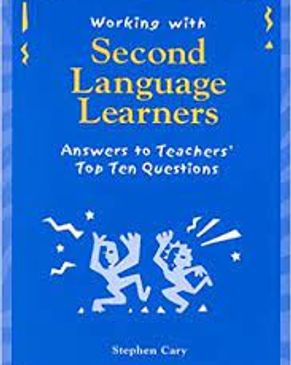Inspiration
A collection of resources and professional development that have inspired, encouraged or supported my teaching career.
Please note that these are not paid endorsements, but resources that I have come across naturally while furthering my skills as an educator.
On My Mind (News & Articles)
On My Bookshelf

Working with Second Language Learners
(Stephen Cary, Heinemann, 2000)
Recommend: New teachers with second language learners.

Linguistically Appropriate Practice
(Roma Chumak-Horbatsch, University of Toronto Press, 2012)
Recommend: All educators

The Restorative Practice Handbook & Restorative Circles in Schools
(Costello, Wachtel & Wachtel, IIRP, 2019)
Recommend: School-wide or division-wide initiative with multiple educators involvement.

Knowing What Counts Series
(Cregory, Cameron & Davies, Connections Publishing, 2011)
Recommend: All educators

The Bilingual Advantage
(Rogriguez, Carrasquillo & Soon Lee, Teachers College Press, 2014)
Recommend: All educators

The Adult Learner
(Knowles, Holton III and Swanson, Elsevier Inc, 2005)
Recommend: Teachers of Adult Education (especially ESL)
.
On My Playlist
RSA ANIMATE: Changing Education Paradigms
Understanding the history of modern-day education helps us think carefully about the structure of the present system and ask the most important question... is this really the best we can do?
TEDx: The One Thing All Great Teachers Do
Thinking of the role of educators as people who inspire and empower rather than people who teach content.
Austin Parks & Recreation: Early Childhood Series: Part 1 - Nature Play
Play-based and nature-based learning naturally combine and create a rich learning experience.
The Outcome: Michelle Obama's Best Advice For Students | How To Succeed In Life
Thinking of the larger picture - who you are as a person rather than your role as an educator.
In My Toolbox (Courses and Training)
Picturing Writing: Fostering Literacy Through Art
Picturing Writing is a literacy program that uses student-created watercolour paintings as the inspiration behind enhancing and developing writing skills. It encourages students to move away from common and overused noun-verb-focused sentences to rich descriptions that stimulate imagination and foster self-expression. Meanwhile, the structured writing process provides flexible scaffolding for students of all abilities and needs. I received training on the poetry and story-writing programs twice while teaching in Nunavut and have merged the techniques with units in science (e.g. weather), social studies (e.g. ancient civilizations) and health (e.g. growth and development). It continues to be a valuable tool in my literacy tool kit.
Quality Classroom Assessment with Sandra Herbst
Sandra Herbst's keynote address and workshop at the territorial-wide teacher's conference in 2012 significantly impacted my understanding of the phrase "Assessment for Learning." Her presentation highlighted how a continuum-based approach using authentic writing exemplars from within the school can engage students through mindful scaffolding, personalized goal setting, self-assessment and documentation. In other words, the focus moves from teacher-controlled to student-empowered assessment. Though I have not yet been able to engage in the school-wide methods (e.g. collaborating with colleagues to develop a school-create continuum), I have found the other techniques extremely successful with a wide range of primary and junior students, many with additional needs (E.g. ESL, ADHD and Autism etc.). This professional development led to my foundations for how I view and incorporate the importance of student engagement in the assessment process, regardless of the subject.
Picture Word Induction Model (PWIM)

I attended a workshop and week-long mentorship guided by Phyllis Engram in 2011 on PWIM. This set of techniques was created by Emily Calhoun, and they focus on teaching students to be observant when reading. It starts with authentic pictures of the topic the class will be learning in other subjects and the opportunity for students to "shake out" what they see in the picture. Students of all language abilities can contribute equally and learn from each other. The collected words also become the scaffolded vocabulary used in general decoding, targeted skill and vocabulary-developing activities. This technique is like comfy clothing in its simplicity but effectiveness. It is one of the first processes I introduced to the students at the beginning of the school year.
On My Board (Pinterest)
Subscribe
Receive updates to your email as new content is posted.